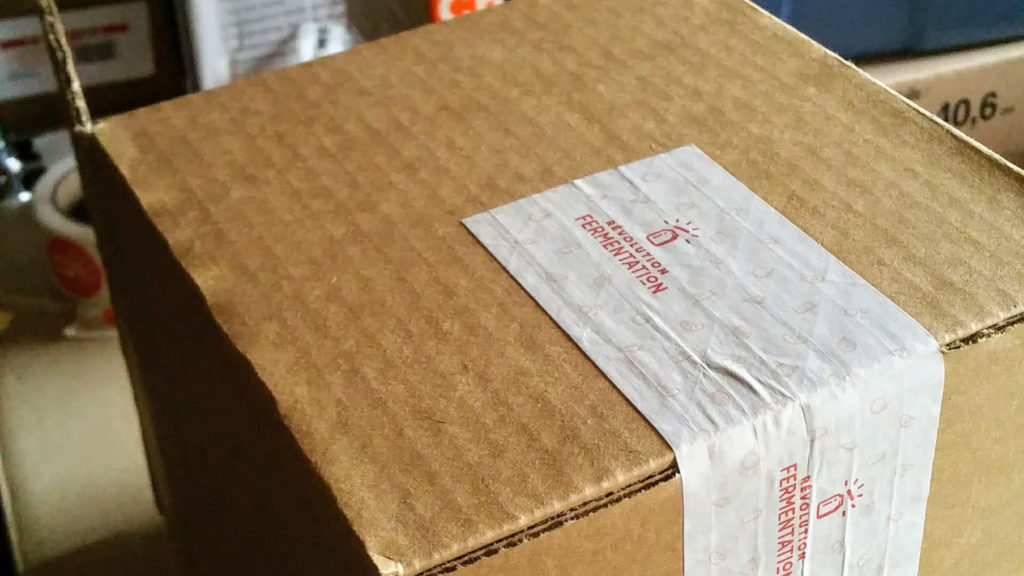Being zero waste is not easy! As we live in an era of overconsumption, over-packaging and ready-to-eat food, we have lost touch with home-made and ancestral methods of conservation.
However, we lived for a long time without a fridge, and we spent a lot less!
Fermentation is an ally of choice in the fight against food waste because it helps to preserve the freshness of our food while exalting the flavours and multiplying the health benefits.
Moreover, fermentation opens up a whole range of opportunities to make our way of life more sustainable: we learn to cook at home, we promote the circular economy, we fight food waste…
Want to know more? Here are 8 ways to reduce waste with fermentation!
1. Extend the Shelf Life of Vegetables
Tired of throwing away vegetables that have been left a little too long in the fridge?
Learn how to ferment them! Vegetable fermentation (also known as lactofermentation) can keep vegetables fresh for months, or even years at room temperature.
In addition, vitamins and minerals are preserved, and even tenfold by the action of bacteria. As a bonus, foods develop new flavours, as nuanced as they are delicious.
Fermentation makes it possible to have healthy vegetables all year long!
Most vegetables can be fermented, even those slightly withered or damaged. Just remove the excessively bruised parts and put the remaining in the jar.
Even herbs, known for their fragility, keep all their freshness once fermented. Never again find an almost-dead bouquet of basil in the back of the fridge, when you can ferment it!
Eating local vegetables all year long is possible! In doing so, we avoid excessive packaging and transport-related greenhouse gases.
2. Extend the Shelf Life of Fruits
Would you like to enjoy the taste of freshly harvested berry all year long? Shrub is the solution! A shrub is a cold-infused syrup made with vinegar, sugar and fruits (more or less equal parts).
After a few weeks of fermentation, you will get a slightly sour syrup, bursting with summer flavours. It’s delicious in a cocktail, useful in flavouring kombucha and terribly good with ice cream.
Traditionally, alcohol was also used to preserve fruit. Before the era of refrigerators, transforming apple juice into apple cider was common to preserve the nutrients and flavours.
It is also possible to preserve the valuable flavours of our favourite fruits by incorporating them into fermented beverages such as kombucha or water kefir.
And in the same vein, there is the preservation of fruit in brandy and sugar, to create what is known as Old Boys’ jam. New fruits are added as the season progresses.
The result is a mixture of alcoholic fruits that have kept their nutrients and flavours. This concoction keeps for years on the counter. To consume with moderation… and pleasure!
3. Use Your Fruits Peels
Do you know of tepache? It is a fizzy alcoholic beverage made from pineapple peels.
Pineapple peel is naturally covered with a multitude of yeast and wild bacteria. Once in an environment favourable to them, microorganisms reproduce and digest the sugars present in the fruit to create a refreshing, effervescent and nuanced drink.
For apple and pear peels, simply put them in the water and wait a few months to end up with pear or apple cider vinegar.
Ginger peels, on the other hand, are known to contain many yeasts. They are useful to give a boost of fizz to your kombucha or to create ginger bug (useful for making various fermented beverages).
Even watermelon bark can be fermented. Just like pickles, just put them in brine and wait a few days: fermented watermelon bark is fresh, crisp and surprising!
4. Reuse Your Containers
Recycling is good. But, giving a second life is even better! No need to buy a bunch of expensive equipment to get you to the fermentation: hunt for jars from your recycling bin!
For fermented vegetables, a simple glass jar is enough, whether it was used for spaghetti sauce or jam.
You can also keep shooter glasses, espresso cups or anything else as a weight to keep fermenting vegetables under their brine.
Remember to keep your glass bottles to fill them later with kombucha, kefir or other fermented drinks.
Even salad dressing bottles can be given a second life by hosting your spicy condiments and sauces.
These solutions are appreciated, especially since we know that glass recycling remains a challenge in many places around the world. By reusing your jars, you know exactly what they are getting!
5. Create a Direct Connection From Farm to Table
Looking for the next vegetable to ferment? Go to the nearest public market!
Most producers offer vegetables without packaging. Less waste, less intermediaries, less transportation pollution… We like that!
We also encourage you to choose organic vegetables to support sustainable agriculture (and fewer pesticides in your ferments).
Buying locally is not limited to vegetables. By visiting a local beekeeper, you will be able to make garlic fermented honey, mead, or jun (honey kombucha) with the honey.
The next time you go apple-picking, bring back some unfiltered organic juice to make your own apple cider. And when you pass by a market kiosk, grab a crate of berries for your next shrub!
In addition, almost all the ingredients needed for fermentation can be found in zero waste grocery stores or bulk buying groups.
For example, you can feed your water kefir with organic cane sugar, sourdough with bulk whole-wheat flour, kombucha with loose tea, and so on.
This is an opportunity to create links with local businesses and producers, and reduce waste!
6. Create Your Own Foods
When you begin a zero waste lifestyle, you often feel helpless in front of tons of packaging at the grocery store.
A good way to reduce packaging is to cook some of your food yourself. Fermentation makes it possible to reclaim so many things!
Did you know that condiments are surprisingly easy to make? Ketchup, relishes, mustard, hot sauces and fermented chutney will make you forget about commercial condiments.
Addicted to sparkling drinks? Learn how to make your kombucha, water kefir, kvass or homemade tepache!
You can also make your own cheese or vegan nut cheese with a minimum of effort.
For the more adventurous, try making mead or sourdough. With a little knowledge, we can produce fresh, tasty and healthy food… without the waste!
7. Preserve Meat and Fish
Meat and fish are not the food with the longest shelf life.
Traditionally, meat is aged using a process called hanging. This term comes from the animal which was hooked in a tree until its head came off: it was then considered perfect, and it was served as a delicacy. Enjoy!
Although you are not advised to leave a piece of steak on the counter, there are more common and accessible techniques that use microorganisms to preserve meat.
For example, charcuterie such as sausages have a true microbial ecology that protects and preserves meat against pathogenic bacteria.
Corned beef is also a piece of fermented meat in brine for a few weeks.
However, care must be taken: without good precautions, there is a higher risk of intoxication than with vegetable fermentation.
If you still want to experiment with microorganisms, turn to miso or koji.
These two cultures are full of enzymes, which are used in marinades, transforming meat, seafood and fish into delicacies and flavours.
8 Cook Your Kombucha Scoby
You have been brewing kombucha for a few months? Your kombucha scoby (or kombucha mother) is growing and you have run out of friends to share it with? Well, cook it!
Although this suggestion may seem strange, the kombucha scoby is actually made of cellulose, bacteria and yeast. Thus, it is simply fibres filled with probiotics.
Dip them in a sweet syrup and dehydrate it to make jujube-type candies. Blend it with fruits and dehydrate to make fruit rolls.
Kombucha scobies can also easily be incorporated in smoothies, where their little tangy taste adds a certain “je ne sais quoi”.
Get Started!
- Discover 6 Benefits of Fermented Vegetables
- Buy all our fermentation equipement
- Read How to Eat Fermented Vegetables

